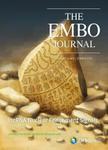版权所有:内蒙古大学图书馆 技术提供:维普资讯• 智图
内蒙古自治区呼和浩特市赛罕区大学西街235号 邮编: 010021
T=题名(书名、题名),A=作者(责任者),K=主题词,P=出版物名称,PU=出版社名称,O=机构(作者单位、学位授予单位、专利申请人),L=中图分类号,C=学科分类号,U=全部字段,Y=年(出版发行年、学位年度、标准发布年)
AND代表“并且”;OR代表“或者”;NOT代表“不包含”;(注意必须大写,运算符两边需空一格)
范例一:(K=图书馆学 OR K=情报学) AND A=范并思 AND Y=1982-2016
范例二:P=计算机应用与软件 AND (U=C++ OR U=Basic) NOT K=Visual AND Y=2011-2016






The recent surge in computer vision and deep learning has attracted significant attention within the galaxy morphology community. Various models have been implemented for galaxy morphology prediction with near-perfect accuracy for certain classes. However, many studies treat deep learning models as black-box entities, lacking interpretability of their predictions. To address these limitations while ensuring good performance, we introduced an Improved SqueezeNet (I-SqueezeNet) by incorporating unique residual connections to improve the prediction performance, and we utilize Local Interpretable Model-Agnostic Explanations (LIME) to understand the interpretability. We evaluated the simplified SqueezeNet and I-SqueezeNet, with both channel and vertical concatenation, and compared their performances with those of some exiting methods such as Dieleman's CNN, VGG13, DenseNet121, ResNet50, ResNext50, ResNext101, DSCNN and customized CNN in classifying galaxy objects using a dataset from the publicly available Galaxy Zoo Data Challenge Project. Our experiments showed that I-SqueezeNet with vertical concatenation achieved the highest average accuracy of 94.08% compared to other methods. Beyond achieving high accuracy, the application of LIME for model interpretation sheds light on the machine learning features and reasoning processes behind the model's predictions. This information provides valuable insight into the galaxy morphology decision-making process, paving the way for further functional enhancements.
电话和邮箱必须正确填写,我们会与您联系确认。
版权所有:内蒙古大学图书馆 技术提供:维普资讯• 智图
内蒙古自治区呼和浩特市赛罕区大学西街235号 邮编: 010021

暂无评论